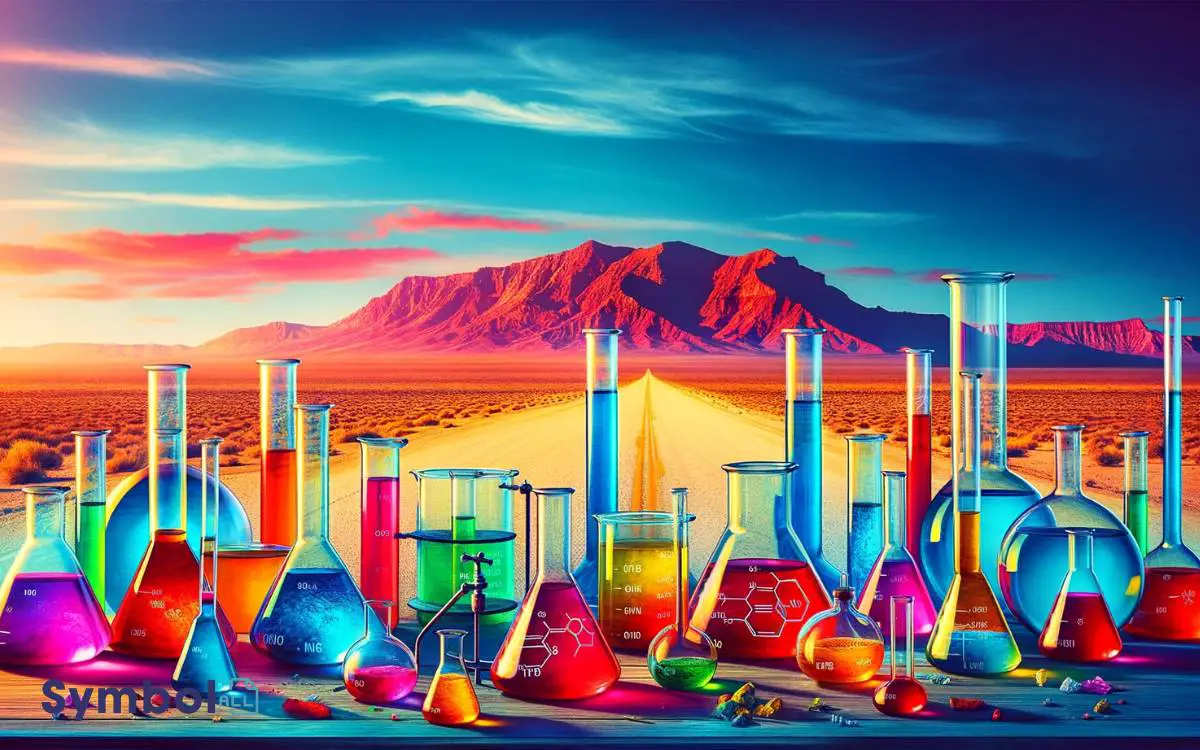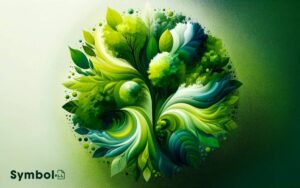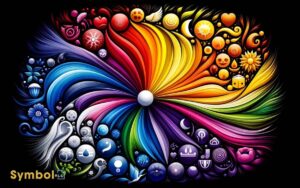Color Symbolism in Breaking Bad: A Complete Guide!
In “Breaking Bad,” every color tells a story. Green isn’t just greed; it’s envy and power thirst, marking key transformations.
- Red screams danger, passion, bloodshed—vividly mapping characters’ emotional shifts.
- Blue, on the other hand, reflects internal struggles, contrasting tranquility with underlying turmoil, underscoring the moral conflicts within.
- Yellow flickers with hope but warns of the meth trade’s dark shadows, revealing deep moral corruption.
- White starts pure, but as characters decay morally, it morphs, symbolizing a journey from innocence to corruption.
These colors don’t just decorate; they’re the soul of the narrative, subtly guiding you through the characters’ moral landscapes. Uncover more, and you’ll see colors in a whole new light.

Key Takeaway
The Significance of Green
In ‘Breaking Bad,’ green embodies a multifaceted symbol of envy, greed, and the pervasive quest for power, intricately linked to the transformation of key characters.
As you explore further, you’ll notice how green saturates the narrative, not just through clothing or props, but in the very environment that surrounds the characters, mirroring their internal struggles and desires.
For instance, Walter White’s shift from a humble chemistry teacher to a drug lord is marked by an increasing presence of green, signaling his growing ambition and moral decay.
Similarly, the use of green in the depiction of money the root of many conflicts in the series—highlights the corrupting influence of wealth.
This intentional choice by the creators adds a layer of meaning, urging you to ponder the consequences of unchecked ambition and greed.
Decoding the Color Red
Shifting our focus to red, we uncover a palette rich with danger, passion, and violence that threads through the narrative of ‘Breaking Bad,’ offering deep insights into the characters’ journeys.
Red isn’t merely a color; it’s a narrative device that vividly illustrates the emotional and psychological landscapes of Walter White and his associates.
Consider these points:
- Danger and Warning: Red often signals impending violence or alerts to critical shifts.
- Passion and Desire: It encapsulates characters’ intense desires, whether for power, control, or love.
- Blood and Violence: The inevitable outcome of their choices is often painted in red, symbolizing both literal and metaphorical bloodshed.
- Transformation: As characters evolve, red marks their changes into darker or more intense emotional states.
Blues Symbolic Journey
Plunging into the cool depths of blue, we find a spectrum that mirrors the complexity and depth of the characters’ internal struggles and moral dilemmas in ‘Breaking Bad.’
Blue, often associated with tranquility and stability, paradoxically underscores the turmoil beneath the surface.
As you explore further, you’ll notice blue’s presence during moments of introspection and pivotal decisions, embodying the dual nature of calm and chaos.
It’s not just about aesthetics; it’s a deliberate choice, enhancing the narrative’s emotional resonance. For instance, the iconic blue meth symbolizes purity in a world tainted by moral corruption.
This color’s journey through the series isn’t just visual storytelling; it’s a layered exploration of character evolution, inviting you to look beyond the surface.
The Dual Meaning of Yellow
Yellow, often seen as a beacon of hope or danger, takes on a complex role in ‘Breaking Bad,’ reflecting the characters’ aspirations and the perilous path they explore.
The color’s duality is deeply embedded in the narrative, conveying:
- Hope and Optimism: Initially symbolizing brighter days ahead, especially for Walter White’s family’s financial stability.
- Caution and Hazard: As the series progresses, yellow flags the impending consequences of the meth trade.
- Decay and Corruption: It highlights the moral decay within characters, especially as they investigate deeper into criminality.
- Cultural References: Used to signify the influence of the Mexican drug cartel, infusing a deeper understanding of the geographic and cultural backdrop.
Analyzing yellow’s use in ‘Breaking Bad’ reveals the intricate layers of storytelling, offering insights into character development and thematic depth.
White: Purity to Corruption
In ‘Breaking Bad,’ the color white evolves from symbolizing innocence and purity to depicting the deep corruption and moral degradation of its characters, particularly Walter White. Initially, you see Walter in light colors, embodying the struggling, innocent high school teacher.
However, as he descends into the drug world, his transformation is paralleled by a darker wardrobe, yet white remains a critical symbol. It becomes a facade, a mask of purity hiding his true, corrupt nature. This shift isn’t abrupt but gradually aligns with his moral decay.
Conclusion
To sum up, ‘Breaking Bad’ expertly utilizes color symbolism to deepen its narrative, inviting you to decipher its characters’ journeys and transformations. This deliberate use of hues not only adds a visual layer to the storytelling but also subtly conveys the emotional states, moral shifts, and evolving dynamics between the characters. By employing color symbolism in movies, creators like Vince Gilligan demonstrate how visual elements can communicate just as powerfully as dialogue or plot. It challenges viewers to actively engage with the subtext, making the experience of watching the show even more immersive and rewarding.
Take Skyler’s evolution, depicted by her shift from muted to bold colors, signifying her shift from innocence to complicity.
This analytical perspective unveils the show’s rich, layered storytelling, where colors aren’t just aesthetic choices but crucial in understanding the moral complexities and internal battles.
Through this, ‘Breaking Bad’ elevates its storytelling, demonstrating that colors are as expressive and meaningful as words.






